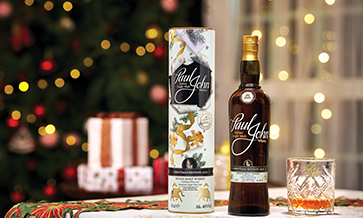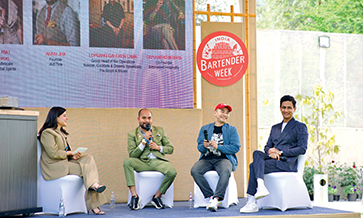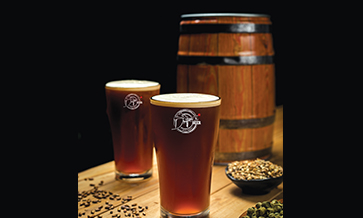For some well-known Indian bartenders, the Covid-19 lockdowns were like gestation periods, in which they experimented with and birthed new and innovative beverages for the ever-hungry-for-change markets around them. Vikram Achanta and Dhananjay Sardeshpande held a round table with Arijit Bose, Olson Pereira and Varun Sudhakar to uncover their journeys from behind the bar to the forefront of production and marketing their own products. Excerpts:
Mumbai-based Varun Sudhakar runs Bar Bundle, a premium beverage consultancy that offers customised services and solutions to industry enterprises. The Bar Bundle Training Programme and Audit Programme offer a range of modules that are curated to meet specific needs of hospitality services.
Varun is himself an alumnus of the Institute of Hotel Management, a two-time winner of the National Diageo Reserve World Class Competition, ‘India’s Best Bartender’ for 2013-2014, founding member of the Indian Flair Bartenders Association, and named the Teacher’s Glasses Best Bartender in India for 2019.
Arijit (the Druid) Bose is Co-Founder of Countertop India consultancy, Partner in South Goa’s award-winning Bar Tesouro, and Creative Director for Mr. Jerry’s cocktails. With years of experience in playing brand ambassador for Bacardi rums, he finally launched his co-created Latin American-Caribbean blend, The Lover’s Rum.
Mumbai-based Olson Pereira is an award-winning independent beverage consultant and spirits enthusiast with more than 16 years’ experience in bars, distilleries and flavour houses. A hotel management alumnus from Pune, he has had stints with top hotels in India, Dubai and Lebanon. He recently launched Quaffine, India’s first cold-brew coffee liqueur.
‘Eureka!’ moments
Our first, and obvious, question was: what got them started on the journey to creating their own brands? Varun, who has spent 14 years tending bars, gives credit to serendipity saying he, along with his like-minded business partners – Viraj Sawant and Sameer Mirajkar of RM Beverages – were toying with ideas during the pandemic lockdowns.
They all agreed that ready-to-drink cocktails in cans was a concept whose time was high. “Of course, canned cocktails cannot replicate the energy and effervescence of a drink in a bar, but RTDs are a great convenience,” Varun offers.
‘In A Can’ cocktails come in 300-ml cans at 9%-12% ABV, now in Gin&Tonic, Rum Latte, LIIT, Whiskey Collins and Vodka Mule flavours. Besides Goa, where they are made, ‘In A Can’ RTD cocktails are already available in Uttar Pradesh, Bhutan and Australia.
Arijit, the itinerant traveller and mixologist, was tinkering (with great success) with Mr Jerry’s bottled cocktails during the pandemic lockdowns in Goa. He had only recently launched The Lover’s Rum, a blend of the dark spirit from the Caribbean and Latin America.
His long legacy as ambassador for Bacardi rums, his frequent brushes with sales and operations, made it an easy choice when he co-created The Lover’s rum (700-ml bottles, 43% ABV), he says. So it was craft rum for Arijit, blending alcohol from cane and grains, and delving into various styles and characters in the dark spirit category.
After a stint as mixologist in India, Olson sought experience abroad – from enviable stints in Dubai to working in boutique properties in Lebanon. A stint as curator for a Lebanese collector helped him understand a connoisseur’s mind and tastes.
Always fascinated with dark spirits, Olson always tinkered with technique-forward drinks. After returning to India, the poor and inconsistent quality of liqueurs riled Olson, so he teamed up with Isaac Vivek and Nikhil Verma to launch Indie Brews & Spirits.
Thereby sprang the idea to develop and produce India’s first cold-brewed coffee liqueur, Quaffine. Launched late last year, it retails in 750-ml bottles at 25% ABV, and is currently available in Goa.
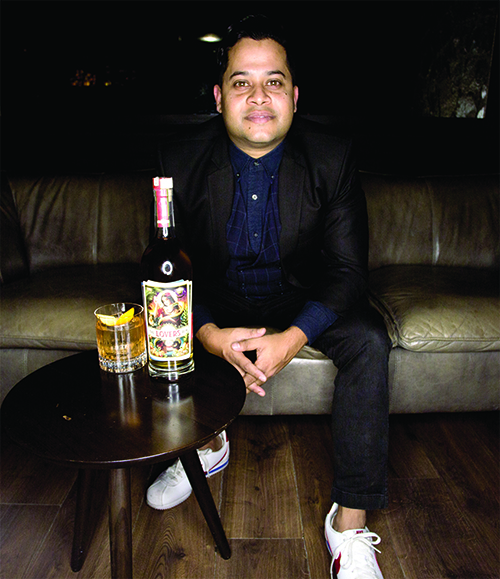
Arijit Bose’s The Lover’s Rum is now being followed with a new blend named after another tarot card, Forza.
Background advantage
All three of them have years of experience tending bars, promoting well-known brands, and have varying nature of stints in the F&B industry. We asked them: how did your experience help in creating your products?
Varun noted that years of creating new cocktails, batch production and balancing flavours had its advantages. However, he is quite candid in admitting that there are two challenges he needs to surmount: increasing the shelf life of his ‘In A Can’ RTDs and retaining the freshness of the aromas in the packaged cocktails.
Arijit says (tongue-in-cheek): “When it comes to designing an alcohol beverage, we have an unfair advantage over others! Because of our experience tending bars, we are privy to our guests’ reactions and emotions to the drinks we serve them.”
His understanding of the character, flavour and ageing of the dark spirit, as well as story-telling prowess with guests, stood him in good stead. “Without our experience tending bars, I don’t think any of us would have been in a position to develop new products and launch these brands,” Arijit adds.
For Olson too his experience behind bars was invaluable – the understanding of spirits, balancing flavours, eye for detail, and getting to know consumer tastes and trends all originate from there.
The coffee beans for Quaffine are sourced from organic plantations in Chickmagalur, Karnataka. That has helped retain the freshness of their aroma, he says. Olson recalls that when experts tasted his samples, they vouched for Quaffine over several world-renowned brands of cold-brewed coffee liqueurs.
“Remember, the mass-produced liqueurs have no face behind them; but our products are gauged, tested and judged by our names. Success or failure of our products is to be borne by us as individuals,” he adds.
Swapping roles
In going on the other side of the bar – even going behind the scenes in researching and developing their products – what were their key takeaways? Did anything take them by surprise in this process?
“The world changed for me after my ‘In A Can’ RTD cocktails reached the market,” Varun recalls. “I realised that product development is only 10% of the journey! The remaining 90% of the tasks have to do with government approvals, excise department permits, distributor network and sales channels!”
During production, there was once 60% wastage due to a defect in the machinery – a contingency Varun had never imagined. In addition, there was no institutional support from the business side of the industry.
“With these new challenges behind me now,” he adds, “I have immense new-found respect for every India-made beverage that comes off manufacturing lines and gets placed on retail shelves!”
Arijit notes that every new product needs up to 3 years to stabilise and finds its position in the market. His learning was mainly this: listen carefully to people’s reactions and market sentiment. “Above all, seek feedback form your ‘non-fans’!”
Olson rues the fact that there are not many investors on the Indian alcohol beverage scene. It took some time for him to get used to rejections from the industry. He credits Mrinal Manu, Founder of Goa-based Blue Ocean Beverages, for being his bottler – and mentor! “Despite some production runs that went wrong, Mrinal acted as my motivator,” he says.
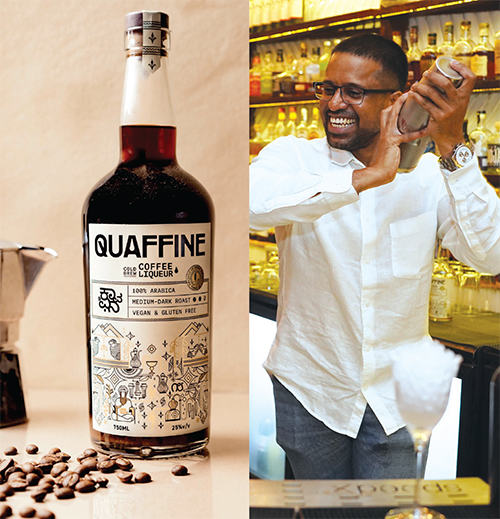
Olson Pereira (R) has shaken and stirred some of his knowledge of the industry to come up with Quaffine liqueur (L).
Roadblocks, rewards
What would be their advice to other bartenders who’re thinking about creating and launching their own products and brands? “First off, build a capable team,” says Olson, “Because business decisions cannot be made on the basis of emotions.”
He recalls someone telling him, ‘To achieve success, always complete what you started out to do’. For boot-strapped ventures, he recommends diversifying sources of income, and to be prepared for the ups and downs. “Most of all, be prepared with a Plan B,” he adds.
Varun had additional income from his Bar Bundle venture, as well as curated drinks shows for the industry. “For me it was a leap of faith,” he recalls, adding that innovators must stay connected to the market and continuously educate themselves.
Arijit has a two-pronged approach: stay committed to your product and business plans; and tune in to the market through the operations teams. “Be prepared to run with the roadblocks and rewards alike,” he opines.
How are the beverage brands doing? Launched in 2018, The Lover’s Rum has already made inroads in five countries, where regulations are not very complicated. Fortunately for Arijit, 80% of his market is outside India.
The rum blend is aimed at bartenders and mixologists, rather than off-the-shelf purchase in a retail shop. Arijit is now ready to launch La Forza, another rum brand, this one named after the eighth tarot card, signifying fortitude.
‘In A Can’ cocktails are available in 150 stores across Goa. Last year Varun launched the RTD cans in Uttar Pradesh, to a (surprisingly) rousing welcome. Delhi and the Indian metros are in the pipeline for this year.
“When we began, we were three people on this project,” Varun says. “Now we are a team of 16, each a subject matter expert. That should give you an indication of how the brand is progressing.”
Olson and Isaac have their fingers crossed after launching Quaffine in the latter half of 2022. We at Brews&Spirits magazine wish all three entrepreneurs good luck and great success.












